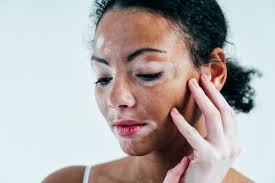

Vitiligo is a continual and long-term skin problem that produces patches of white depigmentation that develop and enlarge in certain sections of the skin. The patches appear when melanocytes within the skin die off. Melanocytes are the cells responsible for producing the skin pigment - melanin - which gives skin its color and protects it from the sun's UV rays. The total area of skin that can be affected by vitiligo varies greatly from individual to individual. Vitiligo can also affect the eyes, inside of mouth and hair. In the majority of cases, the affected areas remain discolored for the rest of the person's life. Causes of Vitiligo Surprisingly, the causes of vitiligo are yet to be precisely established, but most of the research so far points to the following:
Causes of Vitiligo
Surprisingly, the causes of vitiligo are yet to be precisely established, but most of the research so far points to the following: An autoimmune disorder - the patient's immune system becomes overactive and destroys the melanocytes Genetic oxidative stress imbalance A stressful event Harm to the skin due to a critical sunburn or cut Exposure to some chemicals A neural cause Heredity - family link A viral cause. Less than 1% of the population is affected by the appearance of vitiligo in their skin. It has no age, sex or ethnic discrimination, but studies have concluded that a larger percentage of cases seem to start around the age of 20. Vitiligo signs and symptoms vary considerably from person to person. It is more pronounced in people with dark or tanned skin. Some may only acquire a handful of white dots that develop no further while others develop larger white patches that join together affecting larger areas of the skin.
Types of vitiligo
Non-segmental vitiligo


Non-segmental vitiligo is the most common type of vitiligo. Non-segmental vitiligo is the most common type of vitiligo and occurs in up to 90% of people who have the disorder. In non-segmental vitiligo, the patches often appear equally on both sides of the body, with some measure of symmetry. The symmetrical patches most commonly appear on skin that is exposed daily to the sun, such as the face, neck and hands, but can also appear in other areas: Backs of the hands Arms Eyes Knees Elbows Feet Mouth. Non-segmental vitiligo is further broken down into sub-categories: • Generalized vitiligo: no specific area or size of patches, this is the most common type • Acrofacial vitiligo: mostly on the fingers or toes • Mucosal vitiligo: depigmentation generally appears around the mucous membranes and lips • Universal vitiligo: depigmentation covers most of the body, this is very rare • Focal vitiligo: one, or a few, scattered white patches in a discrete area. Most often occurs in young children.
segmental vitiligo.



